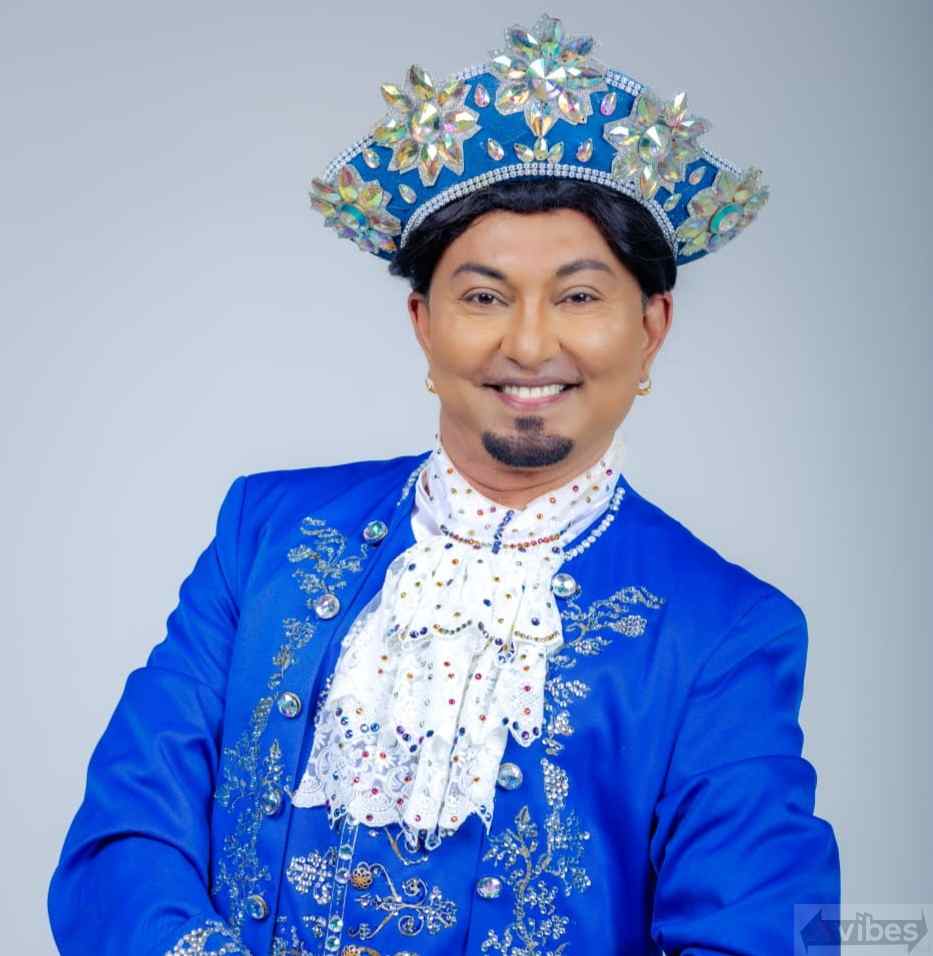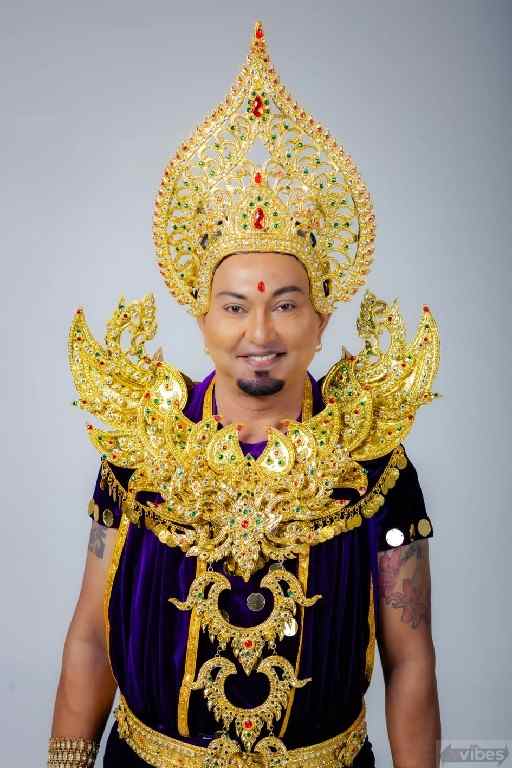By Kimberly Wallace

In the South-Central district of Princes Town, there was once a little boy whose sole dream was to dance. Against all odds he became a dancer, choreographer and founder of the preeminent Shiv Shakti Dance Company, which has performed before celebrities, dignitaries and thousands of people over its 37-year history, and is the only East Indian dance company to have ever received a national award for its contribution to Indian culture.
Ladies and gentlemen, we give you Michael Salickram.
When Kitcharee sat down with Salickram, the last thing we were expecting was a lesson in forgiveness, patience and perseverance. But for the first time ever, Salickram, who audiences are used to seeing under bright stage lights and in full costume regalia opened up about the negative forces – his inferiority complex about his complexion, the bullying, financial problems and persistent rumours about his sexuality which he overcame to become the cultural icon he is today.
“As a child I always thought that to be dark-skinned was to be born in sin,” Salickram told Kitcharee from his home on Malgretoute Road, Princes Town where he grew up and still lives to this day.
His parents worked hard to provide a comfortable life for their six boys but no material gift could make up for the fact that every time he looked in the mirror Salickram felt inferior to his brothers who were all of a lighter complexion. But as long as music played and Salickram danced, all his insecurities faded into the background. When a dancer in the community was recruiting young children to do Indian dance classes, Salickram–who was around seven at the time–approached him and begged to be included. But with a wave of the hand, the man dismissed Salickram saying he was too dark.

It was a horrible thing to say to a child, but looking back, Salickram credits that early rejection for motivating him.
“My life has been one of beating the odds,” he said. “All you have to do is tell me ‘no, you can’t do this’ and I will show you that I can.”
Salickram continued to dance for school events, his abilities were so undeniable that the man who had initially rejected him welcomed him with open arms and allowed Salickram to choreograph dance sequences.
In the years that followed, he teamed up with his cousin Sandra Mathura. His passion for dance didn’t go unnoticed; male dancers are more commonplace today but in the 70s, it was considered taboo. While passing the Croisée on afternoons, Salickram used to pray that the young boys who provoked and called him derogatory names would not be there. Even some family members thought he was wasting his time on dance instead of getting a “real” job.
“But I was focused on a vision – all I ever wanted to do—my first, last and eternal love was to dance,” he said.
Salickram began to teach dance and learn different dance forms. He also became qualified in event management and make-up artistry. In 1987 he created the Shiv Shakti Dance Company, which was the very first Indian dance group to have an all female cast and a male lead. Salickram had a million visions for his dance school but zero dollars. They would practise dancing at a friend’s house in San Fernando, make paper earrings, use chicken coop wire, which they spray-painted silver and stitched beads on, to create headpieces.
Then there were mishaps, one day while on the way to a beach excursion to raise funds, the bus that Salickram’s mother and dancers were travelling in, veered off the road and into the Vessigny river.
But Salickram and the Shiv Shakti dancers kept performing and paying their dues. In 1991, they partnered with the Malick Folk Performing Company to do an iconic dance that accompanied David Rudder’s “Ganges and the Nile”.
The dance company took home titles at local competitions and in 2002, Salickram became the first Indian performer to win Scouting for Talent. In 2004, Shiv Shakti was awarded the Chaconia Medal Silver, a first for any Indian dance group. Salickram got the chance of a lifetime in 2007 when he choreographed dances in the Bollywood film Dulha Mil Gaya, which featured Shah Ruhk Khan. Two years later he choreographed the opening of the Commonwealth Heads of Government Meeting.
Today, the Shiv Shakti Dance Company has gone from paper earrings to rhinestones and Austrian crystals. Their intricate choreography, ornate costumes and headpieces are a testament to Salickram’s sky-high standards. The dance company remains in-demand, performing at private and public events. Their longevity has a lot to do with the time they spend on research, choreography, their attention to detail like the colour of their costumes and the lighting on the stage. Salickram is especially proud that the group has managed to transcend cultural boundaries.
“I’m a patriot. If you look at my body of work, there is always something Tringabgonian in it. If a foreigner comes to Trinidad, we can’t just show the African or Indian culture, our performances reflect the mixture of cultures that make us unique and so that’s why the Shiv Shakti Dance Company has such a wide repertoire. The world is changing and we have to change with it,” said Salickram.
At 57, Salickram is still very present on the stage; exercise and eating right keeps him in shape. The Shiv Shakti Dance Company now has dance classes in eight communities; by training a new generation of dancers the cultural icon is performing what he calls a community service. This current phase of his life will involve more advocacy and speaking out on behalf of dancers whom he says are consistently and woefully underappreciated.
Against all odds, Salickram was able to make a living from dance and has achieved everything he dreamed of. How fitting—given the many roles that dance played in his life; it was his escape, his way of expressing his joys and sadness and the means by which he has managed to heal the inner child who carried personal insecurities and bullying like a heavy burden on his shoulders.
“If I hadn’t learned to forgive, I would have been carrying that heavy load all my life. Instead I have let it go. Holding on to grudges only hurts yourself. Instead I want to thank all those people, because of what I went through, I am who I am today and I am in a better position to be compassionate to others,” said Salickram.
“I also want to encourage young people to listen to their inner voice and find their true purpose. And don’t try to be like anyone else; be yourself, and be the best version of yourself.“
Cover Photo by: Dinesh Maharaj
